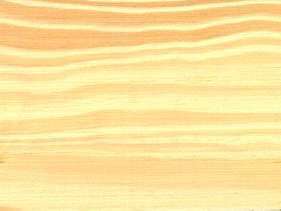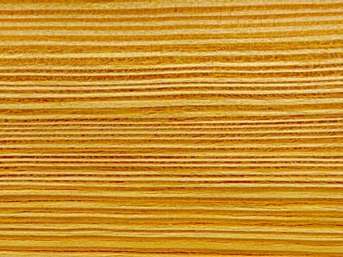 
Scots pine (Pinus sylvestris)
Family: Pinaceae
Common names: Archangel redwood, Baltic fir, Baltic pine, Baltic redwood, Common pine, Danzig fir, Danzig pine, Finnish fir, Finnish redwood, Fir, Gefle fir, Memel fir, Norway fir, Pine, Polish redwood, Red deal, Red pine, Redwood, Scotch pine, Scots fir, Scots pine, Siberian redwood, Soderhamn fir, Swedish fir, Swedish redwood, Vanlig tall, Vanligtall, White sea fir, Yellow deal
Distributed in: Austria, Belgium, Bulgaria, Russia, Canada, Czech Republic, Denmark, Finland, France, Germany, Hungary, Ireland, Netherlands, Norway, Poland, Romania, Russia, Spain, Switzerland, Turkey, Ukraine, United Kingdom, United States, Yugoslavia (Eastern Europe, Mediterranean Sea Region, North America, Western Europe)
Distribution overview: The growth range of this European species is larger than that of any other pine. It occurs from Scotland to the Pacific Coast of Siberia, from Norway to Spain, and from Arctic Siberia to Mongolia. It is also reported to grow in the Mediterranean region, and is a naturalized species in localized areas in southeastern Canada and northeastern United States, from New England to Iowa. The tree tolerates city smoke rather well, and can thrive in various soils, from loams to sand.
Common uses: Bedroom suites, Boat building (general), Boat building: decking, Boat building: masts, Boat building: planking, Boxes and crates, Building construction, Building materials, Cabin construction, Cabinetmaking, Chairs, Chests, Construction, Decorative veneer, Desks, Dining-room furniture, Factory construction, Fine furniture, Flooring, Form work, Furniture , Furniture components, Furniture squares or stock, Furniture, Heavy construction, Joinery (external): ground contact, Joinery, Light construction, Living-room suites, Lock gates, Mine timbers, Oars, Office furniture, Piling, Plywood corestock, Plywood, Poles, Posts, Pulp/Paper products, Railroad ties, Rough construction, Rustic furniture, Tables , Turnery, Utility furniture, Vehicle parts, Veneer, Wardrobes
Product sources: Supplies of Eastern white pine are limited, but its availability is increasing after reaching a low in the 1940's and 1950's. Clear grade material is still difficult to obtain. Younger trees and plantations are reported to have replaced the tall straight virgin forest trees that were prized for ship masts in the colonial period.
Environment profile: Status unknown due to inadequate information
Tree size: Tree height is 20-30 m
Colors: the heart isYellow, Yellow to golden-yellow to orangeand the sapwoodWhite to yellow, Yellow.The grain isStraight, the textureMedium coarse to coarseand the lusterMedium
Natural durability: Very little natural resistance to decay in ground contact , Vulnerable to insect attack
Odor: No specific smell or taste
Kiln Schedules: UK=M
Drying Defects: Dip in anti-stain solution or kiln dried immediately after conversion
Ease of Drying: Seasons fairly rapidly
Tree Identification: Bole/stem form is straight
Comments: General finishing qualities are rated as good
Blunting Effect: Slight
Boring: Good response to boring operations
Carving: Good results
Cutting Resistance: Saw without difficulty
Gluing: Moderate gluing properties
Mortising: Generally mortises well
Moulding: Good moulding properties
Movement in Service: Good moulding properties
Nailing: Easy to nail, Holds nails well
Planing: Good planing properties
Resistance to Impregnation: Sapwood is permeable
Response to hand tools: Variable qualities
Routing recessing: Generally good routing qualities
Sanding: Good sanding properties
Veneering qualities: Moderately easy to veneer, There is slight to moderate drying degrade and the potential for buckles and splits
Steam bending: Poor steam bending characteristics
Screwing: Easy to screw, Screwing yields good results; Turning: Turns well
Painting: Satisfactory; Polishing: Satisfactory; Staining: Stains satisfactorily after surface preparation ; Varnishing: Satisfactory;
- Numerical data Metric
- Numerical data English
- Strength properties
- References
 |
 |
 |
 |
| Item |
Green |
Dry |
Metric |
| Specific Gravity |
0,39 |
0,47 |
|
| Density |
|
512 |
kg/m3 |
| Bending Strength |
492 |
849 |
kg/cm2 |
| Crushing Strength |
220 |
423 |
kg/cm2 |
| Hardness |
|
246 |
kg |
| Impact Strength |
65 |
76 |
cm |
| Shearing Strength |
|
100 |
kg/cm2 |
| Stiffness |
81 |
102 |
1000 kg/cm2 |
| Tangential Shrinkage |
|
|
% |
| Radial Shrinkage |
3 |
|
% |
| Weight |
496 |
496 |
kg/m3 |
| Maximum Load |
0,49 |
0,77 |
cm-kg/cm3 |
| Toughness |
|
192 |
cm-kg |
| Static Bending |
|
|
kg/cm2 |
|
 |  |  |  | | Item | Green | Dry | English | | Bending Strength | 7000 | 12080 | psi | | Density | | 32 | lbs/ft3 | | Hardness | | 544 | lbs | | Impact Strength | 26 | 30 | inches | | Maximum Crushing Strength | 3134 | 6019 | psi | | Shearing Strength | | 1432 | psi | | Stiffness | 1153 | 1461 | 1000 psi | | Toughness | | 167 | inch-lbs | | Work to Maximum Load | 7 | 11 | inch-lbs/in3 | | Specific Gravity | 0.39 | 0.47 | | | Weight | 31 | 31 | lbs/ft3 | | Radial Shrinkage | 3 | | % | | Tangential Shrinkage | 7 | | % | |
Density (dry weight) = 31-37 lbs/cu. ft. 0
Hardness (side grain) = very soft
Bending strength (MOR) = low
Bending strength (MOR) = medium
Toughness-Hammer drop (Impact Strength) = low
Shrinkage, Tangential = small
Shrinkage, Tangential = moderate
Shrinkage, Radial = moderate
Modulus of Elasticity (stiffness) = low
Max. crushing strength (stiffness) = very low
Density (dry weight) = 23-30 lbs/cu. ft.
Work to Maximum Load
Toughness-Hammer drop (Impact Strength) = medium
Shrinkage, Radial = very small
Shrinkage, Radial = small
Shearing strength (parallel to grain) = very low
Shearing strength (parallel to grain) = low
Not hard
Medium weight
Max. crushing strength = medium
Hardness (side grain) = soft
Dents and marrs easily
There is great variability in density, strength properties, and wood characteristics such as, texture, and number and size of knots because Scots pine is distributed over a wide geographical range. I
British Woodworking Federation. 1995. Which Wood . Published by the British Woodworking Federation, Broadway House, Tothill Street, London.Brown, W.H.,1978,Timbers of the World, No. 6 Europe,TRADA, Red Booklet SeriesClifford, N.,1957,Timber Identification for the Builder and Architect,Leonard Hill (Books) LTD. LondonDallimore, W. and Jackson, A. Bruce,1966,A Handbook of Coniferae and Ginkgoaceae Fourth Ed. Revised by S.G.,Harrison,Edward Arnold (Publishers) Ltd. LondonFindlay, W.P.K.,1975,Timber: Properties and Uses,Crosby Lockwood Staples London,224PPForest Products Research Laboratory U.K.,1957,A Handbook of Softwoods,Department of Scientific and Industrial Research Forest Products Research,HMSOForest Products Research Laboratory, U.K.,1933,Preliminary Tests on Timbers investigated under the Auspices of the E.T.C.,Forest Products Research Laboratory, Princes Risborough,, Project 22 Inv.,15 + AddendumForest Products Research Laboratory, U.K.,1937,A Handbook of Home-Grown Timbers,HMSOForest Products Research Laboratory, U.K.,1957,Timbers for Flooring,Forest Products Research Laboratory, Princes Risborough, Bulletin, No.40Forest Products Research Laboratory, U.K.,1969,The Movement of Timbers,Forest Products Research Laboratory, Princes Risborough Technical Note,No.38Howard, A.L.,1948,A Manual of Timbers of the World.,Macmillan & Co. Ltd. London 3rd ed.I.U.F.R.O.,1973,Veneer Species of the World,Assembled at F.P.L. Madison on behalf of I.U.F.R.O. Working Party on,Slicing and Veneer CuttingKloot, N.H., Bolza, E.,1961,Properties of Timbers Imported into Australia,C.S.I.R.O. Forest Products Division Technological Paper,No.12Lavers, G.M. 1966. The Strength Properties of Timbers. Forest Products Research Bulletin, No. 50. Ministry of Technology, Her Majesty's Stationery Office, London.Lavers, G.M.,1983,The Strength Properties of Timber (3rd ed. revised Moore G.L.,Forest Products Research Laboratory, Princes Risborough, Building Research,Establishment Report (formerly Bulletin No.50)Lincoln, W. A.1986.World Woods in Color.Linden Publishing Company, Inc., Fresno, California.Little, E.L.1980.The Audobon Society Field Guide to North American Trees - Western Region.Published by Arthur A. Knopf, New York.Mirov, N.T. 1967. The Genus PINUS. The Ronald Press Company, New York. LCC Card No. 67-14783.Mitchell, A.F. 1985. Conifers. Forestry Commision Booklet No. 15. Forestry Commission, Her Majesty's Stationery Office, London.Patterson, D.,1988,Commercial Timbers of the World, 5th Edition,Gower Technical PressRedding, L.W.,1971,Resistance of Timbers to Impregnation with Creosote,Forest Products Research Laboratory, Princes Risborough, Building Research,Establishment Bulletin No.54 pp.43Rendle, B.J.,1969,World Timbers (3 Vols.,Ernest Benn Ltd. LondonRijsdijk, L.F. and Laming, P.B.,1994,Physical and Related Properties of 145 Timbers, Information for,Practice,TNO Building and Construction Research Centre for Timber Research Kluwer,Academic PublishersSmith, D.N.,1959,The Natural Durability of Timber,Forest Products Research Laboratory, Princes Risborough, Building Research,Establishment Record,No.30Stone, H.,1924,The Timbers of Commerce and their Identification,William Rider & Sons Ltd. LondonT.R.A.D.A.,1942,Home-grown timber trees - their characteristics, cultivation and Uses,TRADAThomas, A.V.,1964,Timbers Used in the Boat Building Industry A Survey,Department of Scientific and Industrial Research Forest Products Research,LaboratoryTimber Development Association Ltd.,1955,World Timbers (3 Vols.,Timber Development Association Ltd.Titmuss, F.H.,1965,Commercial Timbers of the World,Technical Press Ltd., London, 3rd editionWood, A.D.,1963,Plywoods of the World: Their Development, Manufacture and,Application,Johnston & Bacon Ltd. Edinburgh & London
|









